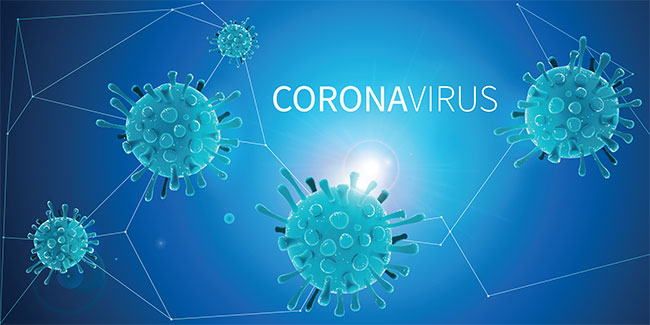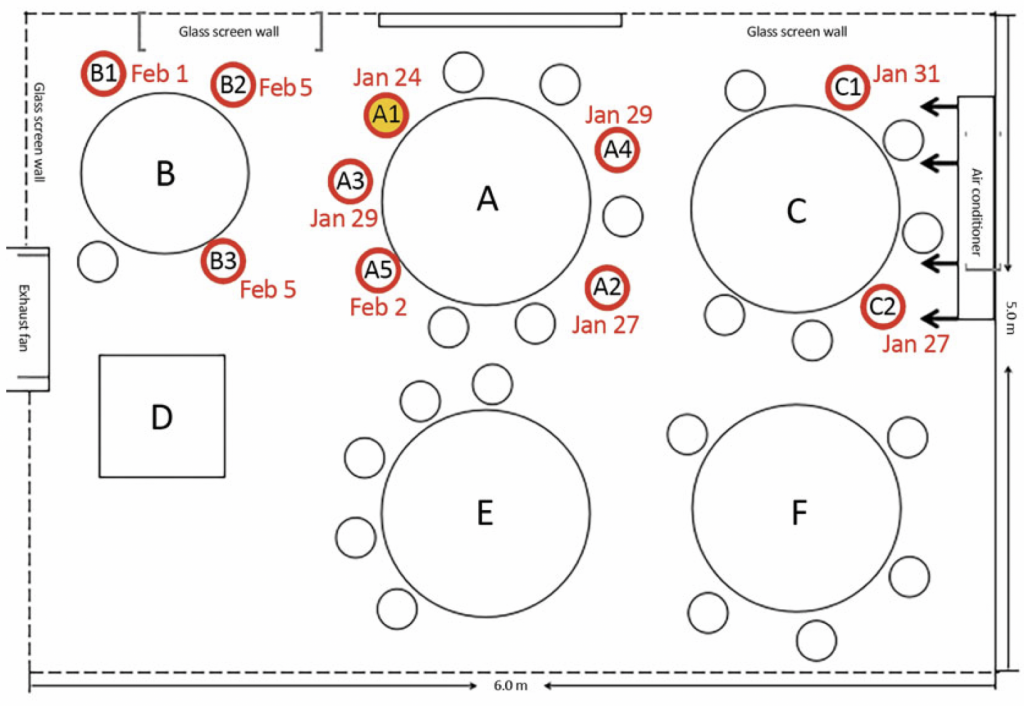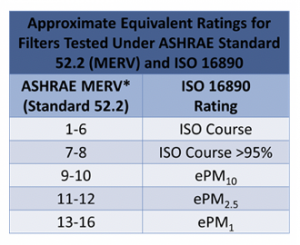
COVID-19 and HVAC Systems: Where Are We?
December 4, 2020 | By Jeslin Varghese, president, Green Building Research Institute (GBRI)
“It is crucial that we arm our HVAC systems to support ventilation and filtration mechanisms that protect building occupants.”

Why can’t I go out? Why can’t I just hang out with my buddies in the bar?
I’m sure these and many other questions were bouncing around your head too when the COVID-19 lockdown first began and continues in some areas of North America and around the world. I’ve had to control the cabin fever as well, negotiating with myself for the greater good.
Background
With more than 65 million cases and over 1.5 million deaths (as of Dec. 1, 2020), the cause of this pandemic no longer needs an introduction. COVID-19 is short for a strain of Corona Virus Disease 2019 first recorded in 2019. According to the Centers for Disease Control and Prevention (CDC) in the U.S., there is limited information regarding risk factors for the disease.
I have been tracking the number of COVID-19 cases in New York City for a Metropolitan Transportation Authority (MTA) construction workforce analysis; there were under 100 cases in the beginning of March, 2020, and fast forward to the end of September 2020, and we were close to a quarter million cases.
HVAC and ambient indoor environmental quality (IEQ)
HVAC systems, both whole building central and stand-alone systems, deliver clean air by exchanging indoor and outdoor air and removing extra heat, humidity, and contaminants. We spend 90% of our time indoors, so maintaining an ambient environment is vital, and an HVAC system plays a crucial role.
According to the EPA, concentrations of some pollutants can be 2 to 5 times higher inside our buildings. This is due to a variety of reasons including cooking, smoking, cleaning, and volatile organic compounds (VOC) emitted from building materials, paints, and furnishings. Ventilation influences the transmission of airborne diseases, therefore a HVAC system is crucial not only for comfort but also for the health, safety and well-being of occupants.
HVAC and COVID-19
Now, let’s talk about the connection between COVID-19 and HVAC. Poor ventilation in indoor spaces is associated with increased transmission of respiratory infections. Several studies after the Severe Acute Respiratory Syndrome (SARS) epidemic in 2003, H1N1 influenza epidemic in 2011, and Middle East Respiratory Syndrome (MERS) outbreak in 2012 have strengthened the correlation.

Fig.1. Sketch showing arrangement of restaurant tables and air conditioning airflow at the site of an outbreak of 2019 novel coronavirus disease, Guangzhou, China, 2020. Red circles indicate the seating of future case-patients; the yellow-filled red circle indicates index case-patient.
Based on a recent study published on CDC’s website during the early months of 2020, 10 individuals from three families (Fig. 1- families A, B, & C) who had eaten at the same air-conditioned restaurant in Guangzhou, China were infected with COVID-19 . As you can see, Families A, B and C were sitting along the line of airflow in the windowless, five-floor building. Other diners (families D & E), not in the same line of airflow were not infected.
The authors of the report posited that the air-conditioning (specifically on a re-circulating mode) likely aided the transmission of respiratory droplets carrying SARS-CoV-2. This is reemphasized by a guidance document published by the European Centre for Disease Prevention & Control (ECDC) that indicated if air is recirculated, it is possible for COVID-19 aerosols to spread through HVAC systems within buildings. With this growing body of evidence, it is crucial that we arm our HVAC systems to support ventilation and filtration mechanisms that protect building occupants.
As many regions re-open businesses and schools, it is imperative that building managers, school superintendents and facility managers are equipped with up-to-date HVAC strategies while operating their newly opened facilities. Let’s look at some HVAC operation strategies designed to help mitigate the transmission of respiratory infections such as COVID-19.
Ventilation rate
A higher ventilation rate (increasing the number of air exchanges per hour) can dilute the contaminated air inside a space more rapidly and decrease the risk of cross infection. This can be achieved by a combination of measures depending on whether the building is naturally ventilated (opening windows and doors for cross ventilation), mechanically ventilated (operating window or attic fans for more outdoor air) or a mixed-mode.
An air conditioning system that normally runs with on recirculation mode may be set up to run on full outside air when possible. When weather permits and outdoor pollution is minimal, it is advisable to have a ventilator’s dampers open fully for complete outdoor air. When appropriate, natural ventilation should be used, not only for health, but to lower energy consumption.
Maximizing outdoor air intake could become costly, as the HVAC system would consume more energy to condition the air for an indoor environment. The American Society of Heating, Refrigerating and Air-Conditioning Engineers (ASHRAE) recommends using minimum outside air as required by ASHRAE Standard 62.1 with a filter with Minimum Efficiency Reporting Value (MERV) of 13 to reduce energy consumption.
Airflow Direction
This is another influence on the airborne transmission of diseases. The airflow direction should be from clean zones to dirty zones, preventing virus-laden aerosols from moving between rooms. This is especially crucial for healthcare facilities and can be achieved through pressure difference. Protective environments such as isolation rooms should utilize a positive pressure difference to minimize the flow of contaminated air into clean air. On the other hand, isolation rooms with COVID patients or where Aerosol Generating Procedures (AGPs) are performed should utilize negative pressure difference. In addition, recirculation of air between spaces, rooms, or zones occupied by different people should be prohibited.
Filtration
 Enhanced filtration is a critical solution for maintaining indoor air quality. ASHRAE’s current recommendation is to use a MERV 13 filter, but a MERV 14 or higher is preferred. A filter of MERV 13 or more is 85%-90% efficient at capturing 1 µm to 3 µm size particles. The SARS-CoV-2 virus is around 0.1 µm.
Enhanced filtration is a critical solution for maintaining indoor air quality. ASHRAE’s current recommendation is to use a MERV 13 filter, but a MERV 14 or higher is preferred. A filter of MERV 13 or more is 85%-90% efficient at capturing 1 µm to 3 µm size particles. The SARS-CoV-2 virus is around 0.1 µm.
Older HVAC systems may not have the capability to support MERV 13 filters. In such cases, buildings, especially schools, should consider upgrading their HVAC systems to accommodate the highest MERV rating possible. Older buildings may install in-room, high-efficiency filtration units. The table (right) shows the approximate relationships between ASHRAE MERV ratings and ISO 16890 testing methods. Apart from installing high efficiency MERV and High Efficiency Particulate Air (HEPA) filters, building staff should pay special attention to the seal edges to limit filter bypass.
Portable Air Cleaners
Homes and commercial buildings with undercode outside air or filtration below MERV 13 should consider portable air cleaners with HEPA filters. For classroom spaces, Harvard School of Public Health’s healthy building program recommends a minimum of five Air Changes Per Hour (ACH) through a combination of outdoor air intake, supplemental ventilation using portable air filters with HEPA filters, and MERV- 13 filtration on re-circulated air.
Ultraviolet Germicidal Irradiation (UVGI)
This is a disinfecting method that uses UV-C radiation to deactivate microorganisms, rendering them unable to replicate or cause illness. The effectiveness of UVGI against SARS-CoV and MERS-CoV has been proven by several studies and it is one possible method to disinfect respirators that may need to be reused.
UV-C can be used in the HVAC systems of residential properties, commercial properties, schools, and healthcare facilities: applications include upper-air disinfection, in-duct disinfection, duct surface disinfection and portable room decontamination. However, the use of UV-C requires special PPE to limit accidental exposure to the eyes and skin. New construction projects or buildings considering HVAC upgrades may consider a UV-C air disinfection system inside their HVAC system by the cooling coils. ASHRAE recommends the use of UV-C as an enhancement where additional measures are required, such as healthcare facilities serving vulnerable occupants or when MERV-13 filtration or 100% outside air cannot be used.
Other Operational Measures
Building managers should consider extending the operating times of their HVACs. Many HVAC systems employ energy-saving settings, such as demand-controlled ventilation with a timer or CO2 detectors. These strategies limit the amount of outdoor air intake and should be avoided. HVAC systems should also maintain a relative humidity between 40% and 60%.
Resource guides from industry leaders and professional organizations
Professional organizations like ASHRAE, Harvard Healthy Building Program, Chartered Institution of Building Services Engineers (CIBSE), United States Green Building Council(USGBC), International Well Building Institute (IWBI), and American Institute of Architects (AIA) have collaborated with leading experts in medicine and public health to develop resources for building staff during the COVID-19 pandemic.
- ASHRAE: ASHRAE’s epidemic task force has been educating and equipping building professionals and staff to re-open their facilities. The all-in-one place infographic includes links to resources for building readiness, tools, strategies, and policy documents.
- CIBSE: This is an international professional engineering association based in London. CIBSE has released several articles including one on COVID-19 and HVAC use and emerging from lockdown which is a series of four documents meant to educate and arm building professionals for re-occupying buildings, ventilation guidance, recommissioning, and elevator use and occupancy. CIBSE is the UK member of The Federation of European Heating, Ventilation and Air Conditioning associations (REHVA). Just like ASHRAE, REHVA has developed a COVID-19 guidance webpage and directory with information on building operation, especially HVAC operation, to minimize the spread of the virus.
- CaGBC/USGBC: The Canadian Green Building Council and the United States Green Building Council have updated their LEED strategies in v4.1 to include indoor environmental quality, cleaning, occupant comfort, operations, better materials, and risk management guidance. USGBC has also introduced six LEED pilot credits to help building staff provide healthy spaces and assist with re-entry. These outline the sustainable, best practices that align with public health and industry guidelines related to cleaning and disinfecting, workplace re-occupancy, HVAC, and plumbing operations.
- IWBI: The International WELL Building Institute is a public benefit corporation whose mission is to improve human health and wellbeing through the built environment. IWBI develops and manages the WELL Building Standard launched in 2014. This is a performance-based system for measuring, certifying, and monitoring features of the built environment that impact human health and wellbeing, through seven concepts: air, water, nourishment, light, fitness, comfort, and mind. The IWBI’s COVID-19 task force has identified and selected applicable strategies from the WELL Building Standard v2 pilot (WELL v2) from eight key themes that reflect how organizations can approach prevention, preparedness, resilience, and recovery in relation to COVID-19 and other respiratory infections.
- Harvard Healthy Buildings program: This is a program at Harvard T.H Chan School of Public Health that created the 9 Foundations of a Healthy Building as a standardized, holistic approach to understanding how buildings impact the people inside them via Health Performance Indicators or HPIs. In August 2020, the program released a “5-step Guide to Checking Ventilation Rates in Classrooms,” a document on best practices regarding assessing ventilation in school classrooms in an effort to reduce the risk of disease transmission, specifically of COVID-19. The guidance also includes recommendations for target air change per hour (ACH), example calculations for ventilation rate, and resources for school re-opening.
- AIA: The American Institute of Architects, as part of its “Reopening America: Strategies for Safer Buildings” initiative, released 3D models for retail stores, office spaces, schools and senior living communities to help reopen safely during the pandemic. A team of architects, public health experts, engineers, and facility managers developed mitigation strategies that paved the way for three tools for protecting the health and safety of the public while providing services. Tool #1 – Risk Management Plan for Buildings – Provides a comprehensive process for assessing hazards in buildings and reducing risk. Tool #2 – AIA Re-occupancy Assessment Tool (2.0) – Provides an enhanced framework of strategies for reopening or making buildings safer, including housing, offices, restaurants, retailers, senior living facilities, and schools.
Jeslin Varghese, president of the Green Building Research Institute (GBRI), is a director in the program controls division of the Metropolitan Transportation Authority’s Construction & Development (MTACD) department in New York City. He has over 16 years of professional experience in sustainability and project controls. He also presented a webinar on this topic, available for viewing at: https://www.gbrionline.org/product/the-hvac-factor-protecting-indoor-spaces-from-covid-19/




